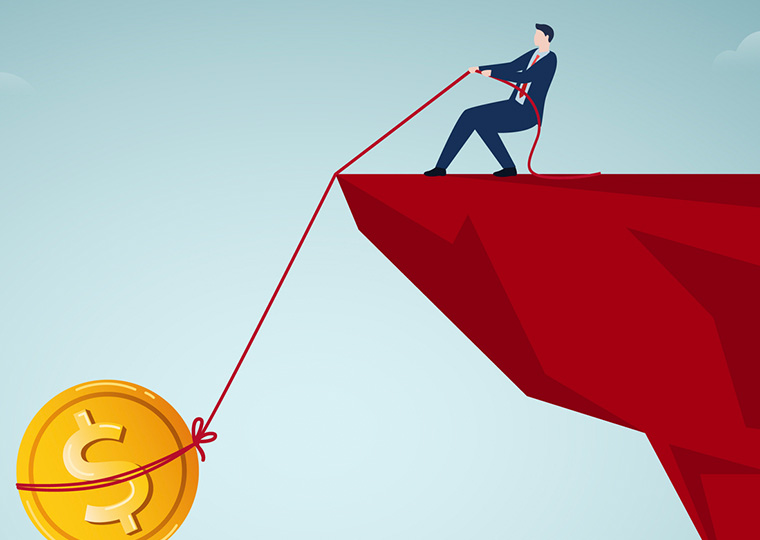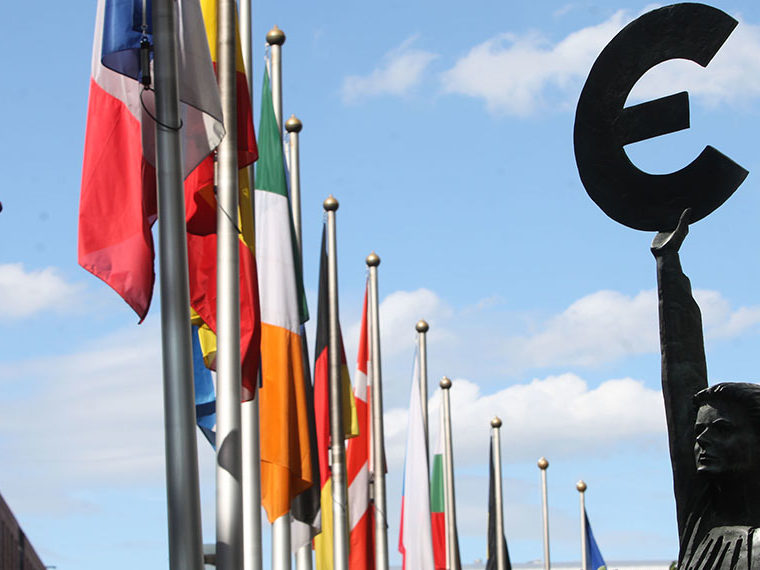A model examines the relationships between innovation, speculation and market values
Market bubbles are often depicted as periods in which high expectations — following new innovations or external factors such as low interest rates — cause investment to flood equity markets, artificially pushing up firm values, which become increasingly untethered from reality.
Until they implode à la Pets.com.
In hindsight, bubbles often seem a blur of craziness. But a working paper from UCLA Anderson’s Valentin Haddad, Federal Reserve Bank of Richmond’s Paul Ho and the University of Minnesota’s Erik Loualiche suggests a nuanced understanding of the relationship between innovation and speculation can yield valuable insights for policymakers hoping to encourage firm creation and innovation.
Opt In to the Review Monthly Email Update.
“There is structure in these disruptions — innovation and speculation interact systematically,” they write.
Defining Different Forms of Value Born Out of Innovation
The researchers’ model seeks to clarify how innovation, speculation and firm creation interact — and how these interactions affect different measures of value. They distinguish between “private” and “social” value, and between market-based and outcome-based value.
—Under the market-based approach, private value is measured by the price of a firm, while its social value is measured by how much the introduction of a new firm into the economy changes the price of all firms in the economy.
—The outcome-based approach measures private value by the average output of a firm, while social value is defined as how much a firm’s introduction into the economy changes total economic output.
The model provides a way to think systematically about the different forms of value produced by innovation, during what might appear to be periods of irrational exuberance.
One key factor is the notion of disagreement. “[W]hen faced with new ideas, people disagree; disagreement leads to bubbles in which high prices generate more investment,” the authors write. Disagreement arises because investors must form convictions about which firms will succeed, but their opinions are based on limited information, due to the innovation’s nascency. The model accounts for the idea that investors “agree to disagree.”
The authors then test three key hypotheses about innovation and firm behavior during speculative episodes: The model predicts that the increase in a firm’s market value following the introduction of a new patent is larger; the relative spillover effect of a new firm on the market value of its competitors is smaller; and there is not a significant change in outcome-based measures of value, such as patent citations, which are a proxy for innovation quality, or output.
How does this work in theory? Picture a competitive landscape of firms making a brand-new, innovative form of widget. Investors, excited about the new widgets, pile into the stock market, placing bets on different widget-makers, based on their beliefs about which one is the best. The more intense their disagreement, the more they expect their own choice to be the most productive. When their chosen firm introduces a patent, they value it even more highly, illustrating the first hypothesis.
Business-Stealing Effect Muted in a Bubble
Then, imagine that prospective widget-makers spot a pile of money to be made, enticing newer firms into the market. In a normal market, the market value of firms reflects the threat of displacement by new firms through what’s called a business-stealing effect — but less so during a bubble, according to the authors.
“With speculation, investors believe they are investing in the most productive firms in the economy, making them less concerned about being displaced by a new firm,” they write, so their valuation of their chosen firm suffers less than in an equilibrium state, as predicted by the model.
But just because a firm’s share price rises sharply, it doesn’t mean the boss can instantly commandeer new factories or force its research and development team to be substantially more brilliant than it was prior to the bubble. Thus, according to their third insight, speculation does not significantly affect the actual output nor the quality of the patents issued by the firms, so outcome-based measures remain unchanged.
To test their model against real-life data, the authors analyze over 1 million patents issued by public firms between 1926 and 2010, to measure how innovation interacts with firms’ market values, both private values (measured by the stock return in the days following a patent approval) and social values (measured by the response of firm valuations to their competitors’ innovations). They then analyzed 49 industries to identify 74 industry years that qualify as being in a bubble between 1962 and 2017 as defined by research from Harvard University’s Robin Greenwood, Andrei Shleifer, and Yang You.
During a bubble, the authors estimate, 1.4 more patents are issued within a U.S. Patent and Trademark Office technology class, which translates to a 15% increase in the overall number of patents per class in that period. Furthermore, the market-based private value of innovation increases by 30% when measured per patent, and between 40% and 50% at the firm level (a firm may receive multiple patent approvals in a given year.) As their model predicts, the quality of innovation increases less, with the number of citations showing a milder increase of just 10%. In normal, nonbubble times, a 10% increase in patent citations corresponds to a 0.1% to 1.7% increase in a firm’s stock-market valuation, a tiny rise relative to the 30% bump during a bubble.
These observations highlight how conventional theories of bubbles, such as those that predict a proportional increase in all firms’ valuations during speculative periods, could miss important nuances. This gives policymakers another way of estimating how innovation provides private value, which accrues to investors, or social value, which impacts the economy overall, as they consider how to subsidize, or tax, the entry of new firms into the market. This helps “shed light on the how the process of innovation alters the economy and ultimately creates growth,” the authors write.
Featured Faculty
-
Valentin Haddad
Associate Professor of Finance
About the Research
Haddad, V., Ho, P., Loualiche, E. (2020). Bubbles and the Value of Innovation. https://dx.doi.org/10.21144/wp20-08






